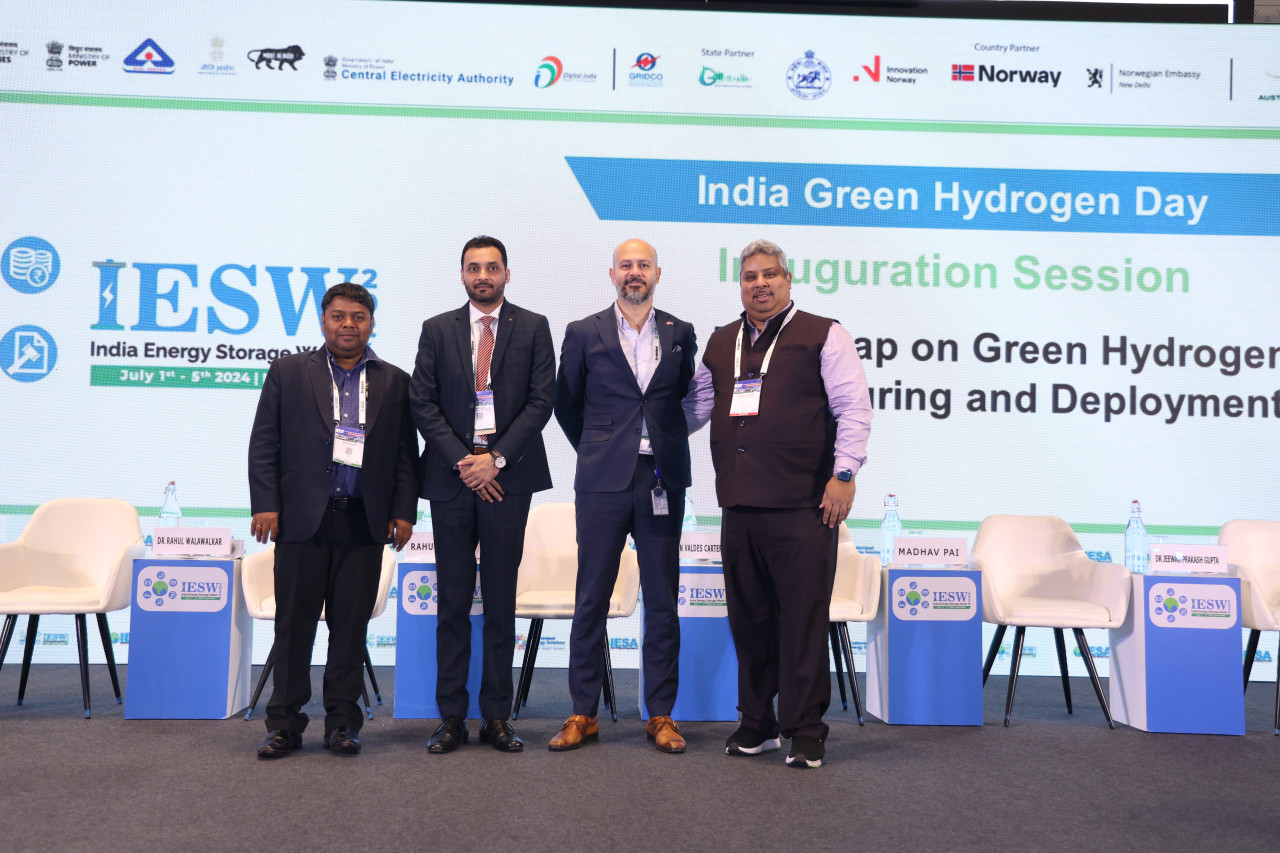IESW 2024: India's GH2 roadmap and partnerships with Australia, Norway
India has big ambitions in the green hydrogen space. Just last month, Shri Bhupinder Singh Bhalla, India's top renewable energy bureaucrat, told the World Hydrogen Summit in the Netherlands that India was prepared to go the distance in supporting global green hydrogen ambitions. How should the country go about achieving this, and what are the potential partnerships that can help us? IESW 2024 tried to shed light on the topic, with a panel discussion evaluating India's green hydrogen journey.
Helmed by Dr. Rahul Walawalkar, President & MD, CES India & President, India Energy Storage Alliance (IESA) and Debi Prasad Dash, Executive Director of IESA, the panel also featured Cristian Valdes Carter, Country Director & Commercial Counsellor - India, Innovation Norway, and Rahul Ranjan, Senior Investment Director, Australian Trade & Investment Commission.
Dr Walawalkar explained the importance of collaboration as a tool that held immense potential for speeding up global timelines. "This is important because we are already running late for some targets that were set for achievement by 2030," he said.
Rahul Ranjan explained Australia's green hydrogen plans and its vision, which includes GH2 at a much lower cost, as solar costs are projected to drop 20 percent by 2030. "Australia is hosting 45 percent of the global GH2 pipeline. This gives us confidence on capability and scale in the sector," he said.
Australia and India have set up a taskforce that will submit its final recommendations within a month or two, he announced. The countries have agreed in principle to collaboration on specific areas.
"At the moment, hydrogen looks complex and challenging, but it has immense potential and looking at the way people and companies and countries are collaborating in this space, there is no doubt this will fructify as the fuel of the future," he concluded.
Speaking about industry and research partnerships between Norway and India, Cristian Valdes Carter pointed to India's engineering prowess, explaining that "In India, we have one of the most advanced engineering communities in the world."
He spotlighted on-going partnerships in the maritime sector. "Maritime is a big sector to Norway so we are developing hydrogen-powered ships which run on green ammonia, and some of these have been contracted out to India," he told the audience.
This was a big opportunity for Indian shipyards, he said, adding that large Indian shipyards such as Cochin Shipyard are delivering ship hulls to Norway as well as developing small ecosystem in the greening of the maritime sector.
For more details of the IESW 2024, visit indiaesa.info




















